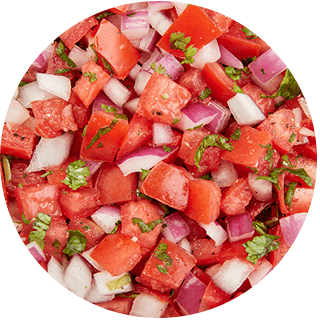
What is wellness?
The answer will vary drastically depending on who you ask.
Many people might start with the current state of their health, for example, but wellness can and should encompass many more aspects of our day-to-day lives. Do we have access to full-service grocery stores with a variety of affordable, culturally relevant food choices? Are our streets and surrounding areas safe with public parks and walkable sidewalks? Are we securely employed? Do we have time to engage in pleasure-filled activities? Are we connected to our family or chosen family and a part of a supportive community? The answers to all of these questions and more impact our perception of our own wellness.
We are bombarded with images of slender, able-bodied people and told that this is the ideal image of wellness and health. In my clinical experience however, I have learned that wellness does not have a particular look and that dominant image of wellness does not encompass all. In fact, I would challenge all of us to reframe this image and put ourselves at the center, thinking about what we want and need around ourselves so that we can be, and feel, well.
Similarly, there is no one-size-fits-all solution in nutrition. Finding a nutrition routine that is sustainable, affordable and delicious can be a challenge. In my book, Eating From Our Roots, I encourage readers to include a variety of foods, in their whole and minimally processed forms, as the mainstay of their nutrition routine. I also recommend 5 pillars that can act as a scaffolding and roadmap for developing a routine with you at the center.
As you develop your unique roadmap, I encourage you to approach mealtime with new eyes. Shop the entirety of the grocery store. Seek out packaged options that have minimal amounts of added sugars, saturated fats and added salts where and when possible. Lean into the frozen section for seafood, veggies, fruits and more. Utilized canned and dry beans, tinned fish, cereal, grains, assorted rice (black, brown, white and red), pastas, and more.
Adding an abundance of well-seasoned plants as well as herbs and spices to your plate (or bowl!) provides the body and cells with phytonutrients, many of which are antioxidants associated with disease risk reduction.
Seek convenient meal solutions that support your wellness goals and needs. Salad and Go is proof that easy and affordable doesn’t have to mean compromising on your wellness.
Planning your meals in line with your personal roadmap can further support your nutrition routine, keeping you organized and prepared.
Sometimes, taking a step back to reassess and reevaluate your individual needs is the best recipe for keeping nutrition interesting, motivating, and enjoyable too!
Let me know what strategies work best for you when you consider resetting your nutrition routine. And stay tuned both here and on my Instagram as we continue to explore more similar topics.
Sign up to learn about menu updates and be in the know!
© 2024 Salad and Go